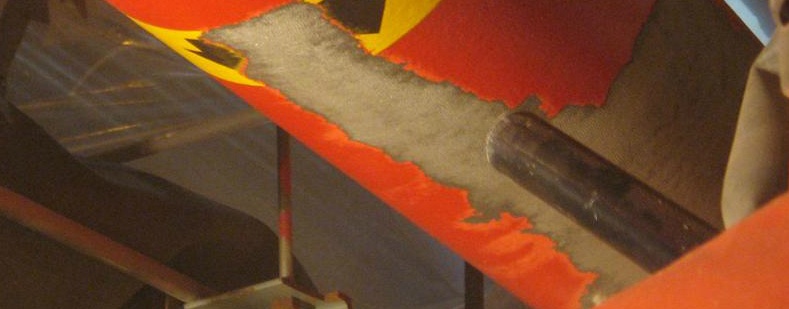It’s a common belief in the industrial and manufacturing industries that all sparks create a hazard. Sparks can represent poor equipment grounding, short circuiting, or friction and collision energy that can be harmful to workers and machinery. Many also believe that all sparks can create an explosion through combustion in an explosive or flammable environment. While sparks can ignite flammable solids, liquids, or gasses, not all sparks possess the energy to cause an explosion.
Take for example sparks generated from power tooling and abrasive blasting. Spark generation from either technology may appear similar, but in actuality they are very different. The potential for combustion of a flammable substance is typically much higher from sparks created by a grinder, than by sparks produced by blasting with Sponge Media™ abrasives, or other ordinary abrasives.
Occasionally abrasive blasting media will spark when blasting hard substrates. Light is emitted from the surface in a short burst of energy seemingly like those generated by power tools. For as long as abrasive blasting has taken place, facility management, health and safety professionals, engineers and blasters alike have wondered if there is enough energy in this spark (created as a byproduct of collision) to ignite inflammable liquids or gases that might be present or nearby.
This curiosity led Shell Research Ltd., and D.W. Singleton to study the effects of blasting in combustible environments in a study called "Blast Cleaning in Inflammable Atmospheres.” The results of the study were conclusive: “The sparks produced were numerous but dull and on no occasion did they ignite an inflammable gas mixture.” D.W. Singleton’s study has been repeated with similar results. Newell D. Casdorph had similar findings in his study titled, "Engineering approach to a chemical plant coating programme. Part 4 - Investigating sandblasting and coating application hazards"
D.W. Singleton further noted that, “there is the possibility that sparks could be generated by static build-up during the blasting operation and these could constitute a hazard.” Simply stated, the potential for combustion of a flammable atmosphere due to abrasive generated spark is low, but there is a chance that static buildup from the confined flow of abrasive and compressed air could create a charge capable of igniting a buildup of flammable gas, liquid or debris.
For more than two decades, Sponge-Jet has been used successfully in operating refineries and offshore platforms. Sponge-Jet recently addressed the static buildup and ignition risks by developing an ATEX category 3 compliant unit for gas and dust environments (Zone 2 and 22) Feed Unit™ – the 170-EX. The EX line includes extra features that help ensure that the entire length of equipment, from blast pot to nozzle is grounded, minimizing static and dissipating the energy as it is generated. The comprehensive upgrades are designed to greatly reduce the possibility of electrostatic discharge. Additional ATEX complaint components used on the 170-EX help ensure safe Zone 2 blasting including more conductive, corrosion-resistant components than the standard –SJ units.
With this new line of equipment, dustless blasting can be used in environments where abrasive blasting has never been considered. Blasting in tanks, engine rooms, refineries, chemical plants, and other areas can be done safely and quickly, without disrupting other trades working simultaneously nearby.








